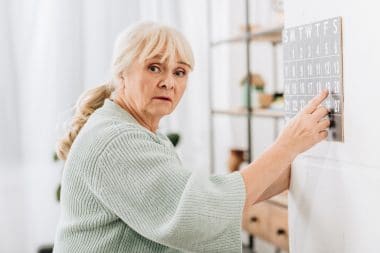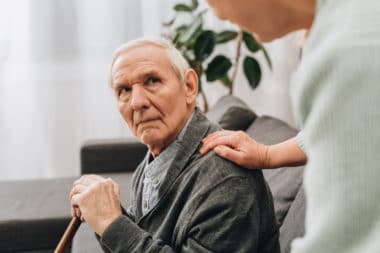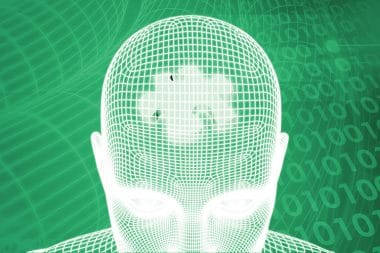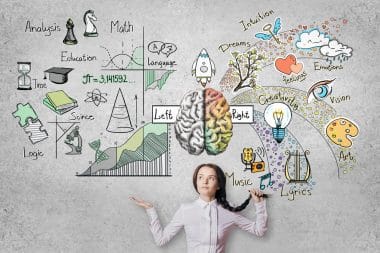As interest grows and funding increases for brain science research, it is sometimes hard to make sense of it all. I thought it would be useful to do a very brief overview of three basic concepts in neuroscience which underlie the field of brain research.
Those three basic concepts are
— the idea of brain plasticity; that our brains can continue to grow and change throughout our life
— the concept of synaptic density and pruning; that the more synapses we have the healthier our brains are
— that the ability of our brain to buffer or recover from trauma is affected by the amount of cognitive reserve we build up through our lifetime.
These concepts are important for all of us, but for individuals with Alzheimer’s disease or other forms of dementia they can have far reaching implications.
Brain Plasticity
A study that illustrated brain plasticity in seniors was the ACTIVE Study. The ACTIVE study was done over a long period of time with a large population of seniors in many different cities in the United States. The researchers took almost 3000 healthy seniors and divided them into two groups. One group was given brain training exercises to complete and the other was not.
The study found that the group who had received the brain training had improved cognitive function — better memory and better information processing than the group that did not have the brain training exercises. The most interesting part was when the researchers did a follow-up five years later the group who had received the brain training was still further ahead. And when they followed up ten years later, they found that the group who had done the brain training had better ADLs. ADLs are activities of daily living. This means that the group was better able to take care of themselves and participate in everyday activities than the group that did not have the brain training.
We know from the research that our brains are impacted by everything that we do. So engaging in mentally stimulating and challenging activities is going to have a positive impact on the health of our brain.
The other interesting point is that brain plasticity can be impacted at any age. While it is true that children react more quickly to brain challenging exercises, we also see that you CAN teach an old dog new tricks!
Synaptic Density and Pruning
Think of synaptic density as the vegetation of your brain. Is your brain a jungle with thick vegetation or a desert island with a single palm tree? When the weed whacker of a disease like Alzheimer’s starts attacking your brain, how quickly will the effects be seen?
With synaptic density and pruning your brain’s basic principle is: Use it or Lose it. If you use your brain you build your vegetation and if you don’t — your brain prunes it.
One of the most critical tools for building your brain is learning new material. This was illustrated in a study of medical students at the University of Hamburg. The students had three MRIs taken of their brain — one before they started studying for final exams, one half-way through and one after they finished studying for final exams. What the MRIs showed was that the grey matter (the actual size of their brains) grew in that six week period.
I’m not saying you have to go off to medical school to build a big brain (apologies to the doctors) but other studies have also shown that learning new material or engaging in challenging activities can buffer the brain against disease and trauma.
Cognitive Resilience
Cognitive resilience is also an important part of brain health. And we can think of this in terms of the brain’s structure and its ability to compensate. If the brain has a well-developed structure — it’s a big brain with lots of synaptic density – it can compensate for disease or trauma.
When I think of the impact cognitive resilience can have on an individual’s capacity to recover from trauma I think about Captain Trevor Greene. Captain Trevor Greene was a member of the Canadian Armed Forces serving in Afghanistan. During a meeting with tribal elders he took off his helmet as a sign of respect. A Taliban fighter attacked him with an axe, chopping into the back of his head.
Miraculously, he survived that attack and was brought back to Canada to recover. Through intense physical and mental therapy, he has regained an impressive amount of brain function. He is now a motivational speaker and has a foundation that supports individuals with traumatic brain injury.
You may also recall Congresswoman Gabrielle Giffords who was shot in the head in Arizona. She was able to make a remarkable recovery from that brain trauma and even returned to Congress for a period of time.
What is important about both these individuals is that they had developed their brain’s capacity and resilience. Both of them were individuals who were intellectually engaged with the world around them. This helped them recover when trauma came their way. The brain is remarkably resilient and learning is a key factor in building cognitive resilience.
Other factors that affect cognitive resilience are physical activity; something as simple as walking can have such a positive impact on brain health. Good nutrition and social stimulation are also key elements to brain health, as is prayer. Meditation or prayer actually thickens the frontal cortex of the brain — the part of the brain that is responsible for executive functioning.
Another factor key to brain health is a sense of purpose. A recent study from Rush University Medical Center in Chicago looked at the brain health of 1400 senior participants over the later stage of their life. Every year they were asked purpose-based questions to measure whether or not they felt purpose in their life. When they died, their brains were autopsied to look at brain health. At the time of the study being published, 246 autopsies had been performed. What the researchers found most remarkable was that those with a sense of purpose, mission or meaning to their life had a 30% lower rate of cognitive decline.
The Nun Study and Sister Bernadette
Now I want to bring you to the Nun Study. The Nun Study began in 1986 when Dr. John Snowdon was looking for a research project. He wanted to study aging and isolate the factors that helped you age well. He needed to find a group that had a similar experience growing up … and his brilliant idea was to study nuns who lived in a convent. This led him to the School Sisters of Notre Dame in Ohio. 678 nuns agreed to be part of his study. He studied their lives up to and including their brains after death.
One of the most powerful statements about this study was made by Sister Rita Schwalbe an administrator of the convent — “Our congregation was founded to work with the poor and powerless. Who’s more powerless than someone with Alzheimer’s disease?”
The motto of the Nun Study was “That You May Have Life to the Full” and with that in mind I want to tell you about one of the sisters in the study called Sister Bernadette. Sister Bernadette had been a teacher all her life. She was well-educated with a Masters in Education and had worked at seven different schools during her career. At the age of 85 she died of a massive heart attack. During the study period her MRI scores showed she had a high amount of grey matter — in other words a big brain. She did well in the mental testing and when she died they autopsied her brain.
Now the doctor who performed the autopsy knew nothing of the individual whose brain he was looking at — and he presented first. He indicated that the individual had Braak Stage 6 Alzheimer’s disease, her brain was riddled with plaques and tangles, and she would have been very low-functioning — not walking or talking.
The group who had worked with Sister Bernadette then showed video clips of her prior to her death — with no visible symptoms of Alzheimer’s disease. The group who had performed the autopsy was stunned.
What they concluded and what further research has shown is that an increased cognitive reserve or greater cognitive resilience reduces your risk of Alzheimer’s disease.
So building cognitive resilience throughout your lifetime is important to buffer against both disease — like Alzheimer’s or to assist in recovery from a brain trauma like a stroke or a concussion.








Reply